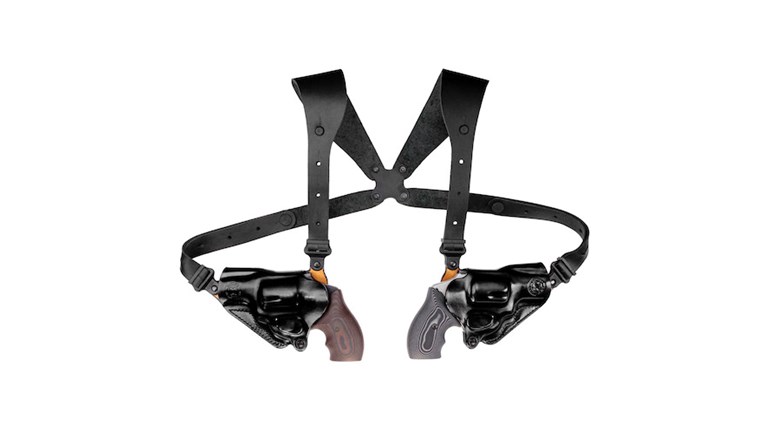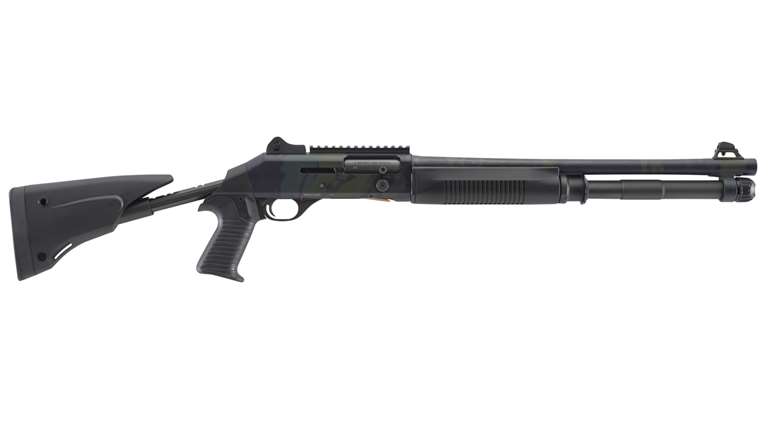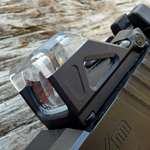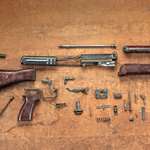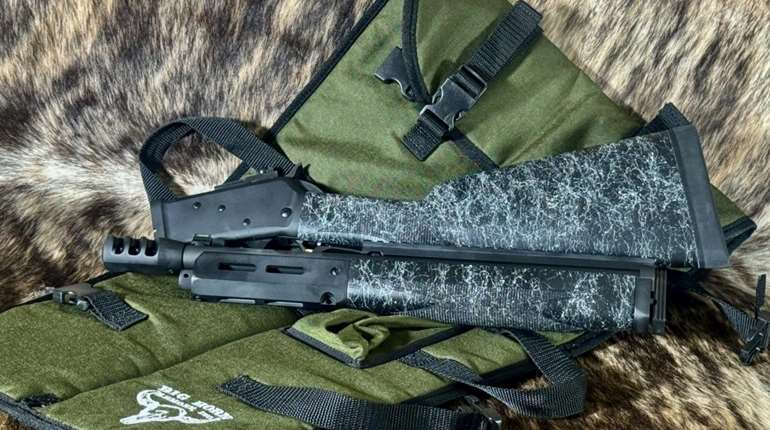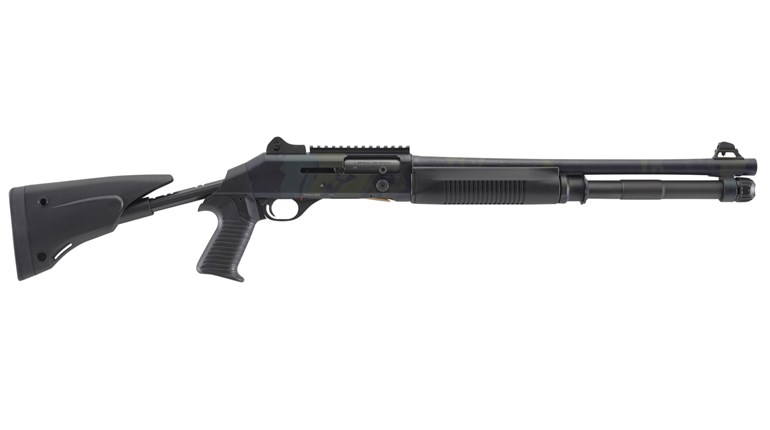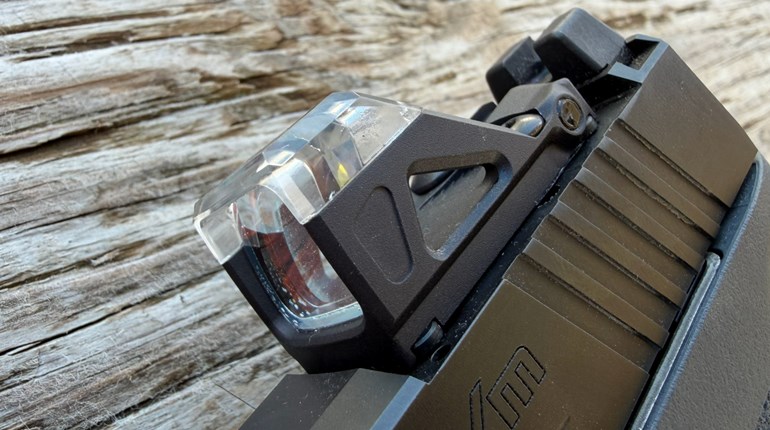
Those of you who are familiar with handgun history shouldn't be surprised to learn Remington introduced a new pistol. After all, Remington's history with handguns goes back to the days before the Civil War, with the introduction of rugged, single-action revolvers. And, as cartridge ammunition became available, Remington sixguns filled the holsters of many a frontiersman. One has only to check old-time photos to see the distinctive Remington grip shape sticking out of a lot of that frontier gunleather.
The company also manufactured one of the most popular hideout guns of the 19th Century, the .41-caliber Remington Derringer. And it followed that up with one of the nicest pre-war pocket semi-automatics, the Model 51 (1918-1935), which was chambered for the .32 ACP and .380 ACP cartridges.
Just prior to the beginning of World War I, the U.S. Military adopted John M. Browning's 1911 pistol as its official sidearm. During the war, the government began to contract with various companies to build the service pistol to meet the unprecedented quantities required. From 1918 to 1919, Remington built slightly more than 20,000 M1911s for the government.
From the Remington sixgun packed by Frank James, right on up to the bolt-action XP-100 in .221 Fireball, the company has quite a history with handguns. And it has the 1911 pistol in its DNA, as well. So, it's really not surprising that the first Remington pistol in quite some time is a .45 ACP 1911, the new R1.
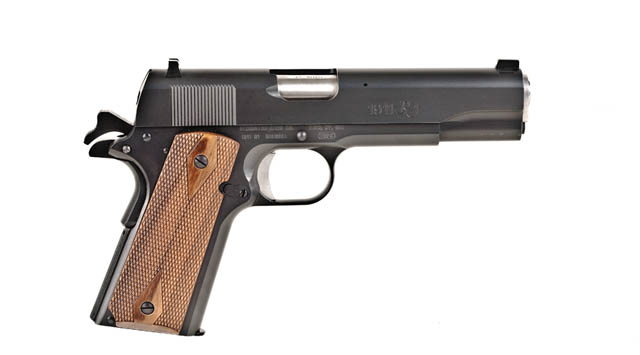
A full-size 1911, the R1 has a 5-inch barrel, weighs 38 ounces and is 8.5-inches long. Magazines provided with the pistol are of the seven-round variety, giving the R1 a total capacity of eight rounds with a loaded chamber. It has a satin black-oxide finish, checkered walnut stocks and 3-dot combat sights. The R1 has three safeties: the thumb safety, the grip safety and a firing-pin block safety located inside the slide. The pistol's frame is investment cast carbon steel and the slide is forged carbon steel.
During the course of preparing this article, I had the opportunity to examine three R1s. In each case I found the black-oxide finish of these 1911s to be very smooth and attractive. The company logo is found on the left side of the slide and the "1911 R1" logo is located on the right. Its attractive finish is offset by a set of checkered walnut stocks sporting the traditional, smooth double-diamond-shaped patterns surrounding the screws.
In a conversation with Carlos Martinez, R1 project marketing manager, I learned Remington wanted this 1911 to have a look akin to its original World War I .45 ACP. For this reason, the mainspring housing is flat, the thumb is safety small and the grip safety is of the original design. Its checkered walnut stocks enhance this original appearance.
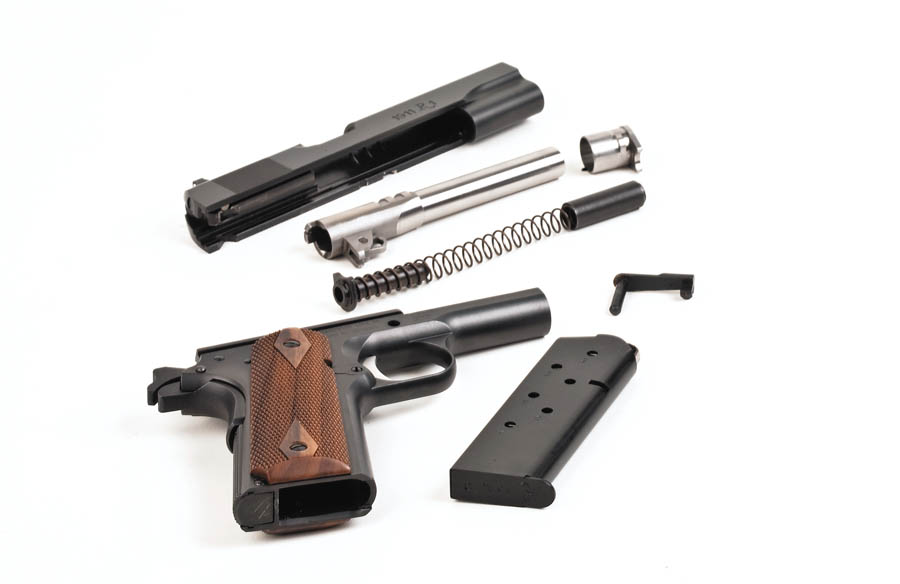
However, this Remington 1911 is made to shoot as well as admire, and for that reason it is fitted with a set of fixed 3-dot-style combat sights. While not a part of the traditional look, these sights certainly enhance the gun's shooting qualities. And those of you who have shot original G.I. .45s know what an improvement that is. The small sights on original G.I. variants proved difficult to pick up when fast shooting was the order of the day.
My test guns arrived while I was visiting the Gunsite Academy near Paulden, AZ. Making use of this fine facility, I gathered up some .45 ACP ammo and made an effort to put the R1 through its paces. My first observation was that all three of the guns had very nice triggers that broke cleanly at approx-imately 4 pounds. While original G.I. 1911s traditionally had a reputation for notoriously heavy triggers—regardless of manufacturer—I was pleased Remington paid attention to this detail.
Shooting a variety of 230-grain .45 ACP ammo from Remington, Federal and Winchester, I was also pleased to see the R1's fixed combat sights delivered the payload to the center of the target at all practical ranges. Further tests showed the pistol averaged 2-inch groups at 25 yards from a sandbag rest.
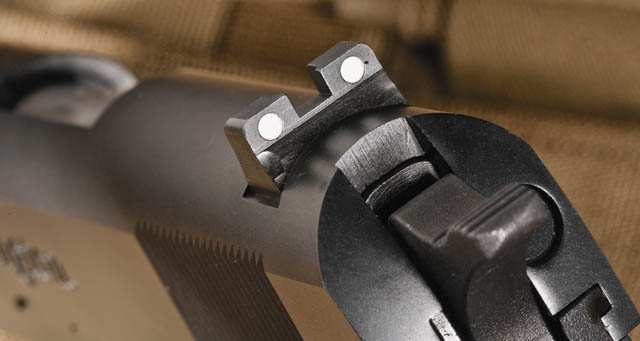
My shooting partner during testing was Mike Moore, a retired police officer, gunsmith and Gunsite shooting instructor. Using Remington's 230-grain FMJ ammunition, Moore worked the Remington R1 from the holster in various defensive-shooting drills. He commented on the quality of the R1's fit and finish and was also pleased to find such a nice trigger on an out-of-the-box 1911.
It was a pleasure to watch him perform Gunsite's Failure Drill. This technique was designed to protect the defensive shooter from an attacker either wearing body armor or high on some mind-altering substance. Two center-of-mass shots are placed, the sights are re-acquired and one shot is then placed to the head, impacting the central nervous system and neutralizing the attacker. Using the R1, Moore continually placed two center hits close together, and then delivered the third shot with precision.
I also ran the R1 through several defensive-shooting drills working from my Galco holster. The pistol functioned flawlessly, reliably and accurately. I had no trouble activating its small, traditional thumb safety. The sights were easy to see and quick to acquire, though I don't particularly care for the rear sight's white dots. In short, I found the R1 to be a fine choice for self-defense and general shooting as it comes out of the green Remington box.
Col. Jeff Cooper once said a fighting pistol ought to be a big-bore with good sights and a good trigger. The Remington R1 1911 is just that. What's more, with a suggested retail of $699, it's an affordable pistol by today's standards.
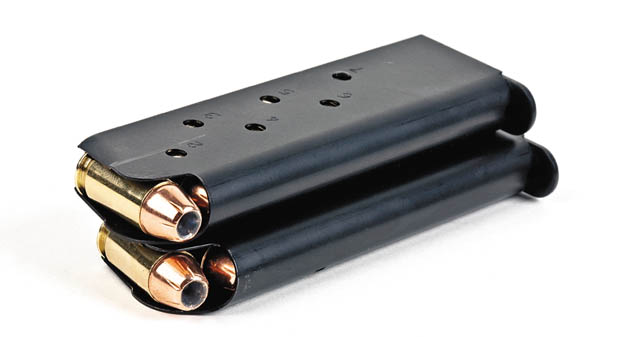
As nice as the Remington R1 is, Moore and I found a couple of things not exactly to our liking. The first is the firing-pin block safety. This gizmo is installed in the pistol's slide and is designed to keep the pistol from firing if it is dropped on a hard surface, even though this occurrence has rarely been documented. Unfortunately, the unit can also malfunction and cause failures to fire. I am sure that Remington included this feature at the urging of legal counsel. Among the current crop of 1911s, some companies install the firing-pin block safety and some don't. I would prefer none of them did.
Our second criticism of the R1 is the use of the G.I.-style grip safety. When shooting in a fast, defensive style, it is very important to have a high grip on the 1911 pistol. This aids in controlling the recoil and allows for faster follow-up shots. Shooters, especially those with beefy hands, will find the top tang of the original grip safety does not protect the hand from being bitten by the hammer as the handgun cycles—the main reason you see most of today's 1911s boasting a beavertail grip safety.
Remington's Martinez is an IDPA competitor who knows the value of a beavertail grip safety. In our conversations, it was clear that the decision had been made to give the R1 a traditional design. However, Martinez was quick to point out that future Remington 1911 models will reflect the needs and desires of today's shooters.
Martinez went on to say the R1 is being made at Remington's Ilion, NY, plant. Currently, frames and slides are being made in-house, while the barrel and other parts are outsourced. Martinez told me the next major change in production involves Remington building its own barrels. I suspect when the Remington 1911 project gets into full swing, virtually the entire pistol will be manufactured at the Ilion facility.
In conversations with Martinez and Remington's Senior Public Relations Manager Linda Powell, I suggested the company offer a concealed-carry version of the R1 incorporating a beavertail safety, combat thumb safety and slim concealed-carry stocks. I'd like to see the concealed-carry treatment on a 5-inch barreled gun as well as on a 4.25-inch, Commander-style pistol. Their response was to smile very nicely, and say, "Sheriff, please be assured that other models are in the works."
So much for my ability to weasel corporate secrets out of those two. But I will keep trying, and you can rest assured that Shooting Illustrated will be among the first to report future models of the Remington 1911 as they become available to the shooting public.
Remington has produced a quality pistol at a decent price. Shooters wanting a traditional-looking 1911 should be pleased. However, at this reasonable price, the R1 will also be a great platform for a project gun on which shooters can install accessories for their particular kind of shooting. In either case, the foundation, thanks to Remington, is one of class and reliability.
On the eve of its 100th birthday, it's pleasing to see the grand-old .45 ACP 1911 is still such a popular pistol among serious handgunners. The simple reason is, after all this time, the 1911 is still one of the finest fighting pistols ever made. Its simple design and rugged reliability also make it a great choice for plinkers, target shooters and competitive shooters. Remington was there in the early days of the great 1911 story, and it is great to see the company stepping up to the plate once again by offering a classic .45 ACP version to the public: the new R1.













